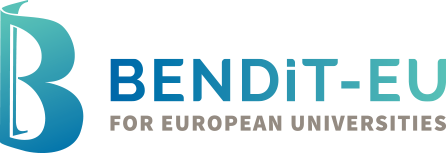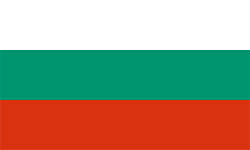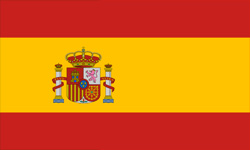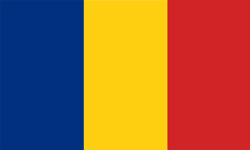
Burnout manual - pocket edition - Raising awareness on academic burnout by providing on a wide scale up-to-date, evidence-based information for the identification, the prevention and the most effective interventions.
The aim of the Burnout Manual- pocket edition- is to increase the awareness and understanding of academic burnout, as well as of the factors that lead to its development among medical students and allied health students. Raising the awareness of academic burnout by designing a Burnout manual – pocket edition will also help professors, student advisors and student counseling specialists from universities to prevent and develop a more compatible medical education environment with the needs of the students.
The content of academic Burnout Manual-pocket edition- is structured in 3 main chapters of utmost importance and impact for acknowledging the burnout theme: diagnosis, prevention and interventions.
The Burnout Diagnosis chapter includes topics such as definitions, types of burnout, protective and risk factors/stress triggers, signs and symptoms of burnout, as well as self-evaluation instruments for burnout, whereas the Burnout Prevention chapter encompasses elements of primary and secondary prevention classified in management of individual resources, organizational activities, and protective laws and regulations. The Burnout Interventions chapter is organized around two main directions: Individual and group activities that are effective in alleviating burnout symptoms and services provided by universities, respectively. Among the topics encountered in the individual and group activities of the chapter, the following are enclosed: relaxation techniques, self-understanding, coping skills and social support, while in the services provided by universities are included the mentoring and support provided by tutors and the help offered by the Balint groups.
The innovation of this booklet is two folded: (1) it was evaluated by the end-users themselves, namely medical students and allied health students and improved accordingly, and (2) it was peer–reviewed by two specialists, apart from the contributors, from each country of the Consortium, and it was changed accordingly.
We hope that The Burnout manual – pocket edition will help medical and allied health students during their university studies to easily identify burnout in their own life or to identify it in their colleagues as well as professors and tutors in their quest to prevent and implement specific interventions.

Burnout Web Platform - a digital tool for the self-assessment of Burnout, providing also self-help and community resources
The aim of the Burnout Web Platform (BWP) is to merge, based on the information provided in the Burnout Manual- pocket edition, in an online friendly platform the necessary instruments about academic burnout to help in diagnosing and preventing burnout among medical students and allied health students.
In this sense, Burnout Web Platform (BWP) will uncover information regarding the prevalence of academic burnout among users, the most useful and frequent interventions, as well as take ito account their feedback, guaranteeing the confidentiality of the collected and analyzed data.
The knowledge generated by the screening instruments of academic burnout within the platform will be transformed into meaningful and substantial policies of the medical profession.
The General content of the BWP is structured as follows:
- About;
- Self-help in distress;
- Self-assessment;
- Community resources;
- Forms/policies;
- Frequently Asked Questions (FAQs).

Curriculum for students and Train-the-trainer for support staff - Improving the skills of medical students and staff working in university support services who directly address or refer to cases of academic burnout.
The Curriculum for students and train-the-trainer for support staff consists of a five-day experiential research-based training for students and an accompanying train-the-trainer resource guide for support staff of the partner universities.
The content of the curriculum for students as well as the train-the-trainer resource guide are structured around two modules: Module 1 – “What is burnout? What are the risk factors for burnout in the academic environment?” and Module 2 “Available resources”.
Module 1 “What is burnout? What are the risk factors for burnout in the academic environment?”
- Explore the students' perceptions of burnout (whole group)
- Explore the main characteristics of burnout (whole group)
- Explore the phases of burnout progression (whole group)
- Self-evaluation of burnout
- Available psychometric instruments (whole group)
- Self-assessment of burnout (individual work)
- Post-test group discussion about the perception of the test and of the test results (whole group)
- Exploring risk factors for burnout in the academic environment (whole group)
- Lessons for taking home (whole group)
- Homework (individual work at home)
Module 2 “Available resources”:
- Revision: sources of burnout in the academic environment (whole group)
- Exploration of individual resources
- Coping strategies, self-efficacy, humor, locus of control, hardiness (whole group)
- Practical work (teams of 3-4 participants, followed by group discussion)
- Exploration of organizational resources
- Time management, realistic evaluation of academic demands, expressing expectations, getting and providing social support, a match between individual aims and the organizational aims (whole group)
- Practical work (teams of 3-4 participants, followed by group discussion).The resource for the support staff is developed around the same themes as the curriculum for students, but it will have an added element of how to have more impact when training students about the burnout risks and prevalence.
Both the curriculum for students and the resource guide for the support staff will be tested in the framework of the learning-teaching training activities (see the Events section- hyperlink).

Policy toolkit - a set of recommendations for addressing the development of normatives and regulations designed for the prevention of academic burnout at the university level, along with a methodology for the adaptation of these recommendations.
The policy toolkit concentrates on the three Rs approach for an organizational response to the burnout issue, as follows:
- Recognize (“Watch for and recognize the warning signs of burnout. Learn to say “no” and be OK with it”)
- Reverse (“Acknowledge the damage and reverse it by managing stress and seeking support”)
- Resilience (“Build your resilience to stress by taking care of your physical and emotional health”)
Around these three stages for preventing burnout, along with the decision-makers from all partner universities, a consensus-based methodology to develop a set of best practices and policy recommendations for addressing academic burnout at an institutional level will be employed. The toolkit will summarize best practices on an international level and will provide a set of measures that medical and allied health universities could implement, in order to decrease student burnout. The official launch will take place during a Multiplier event (hyperlink).










